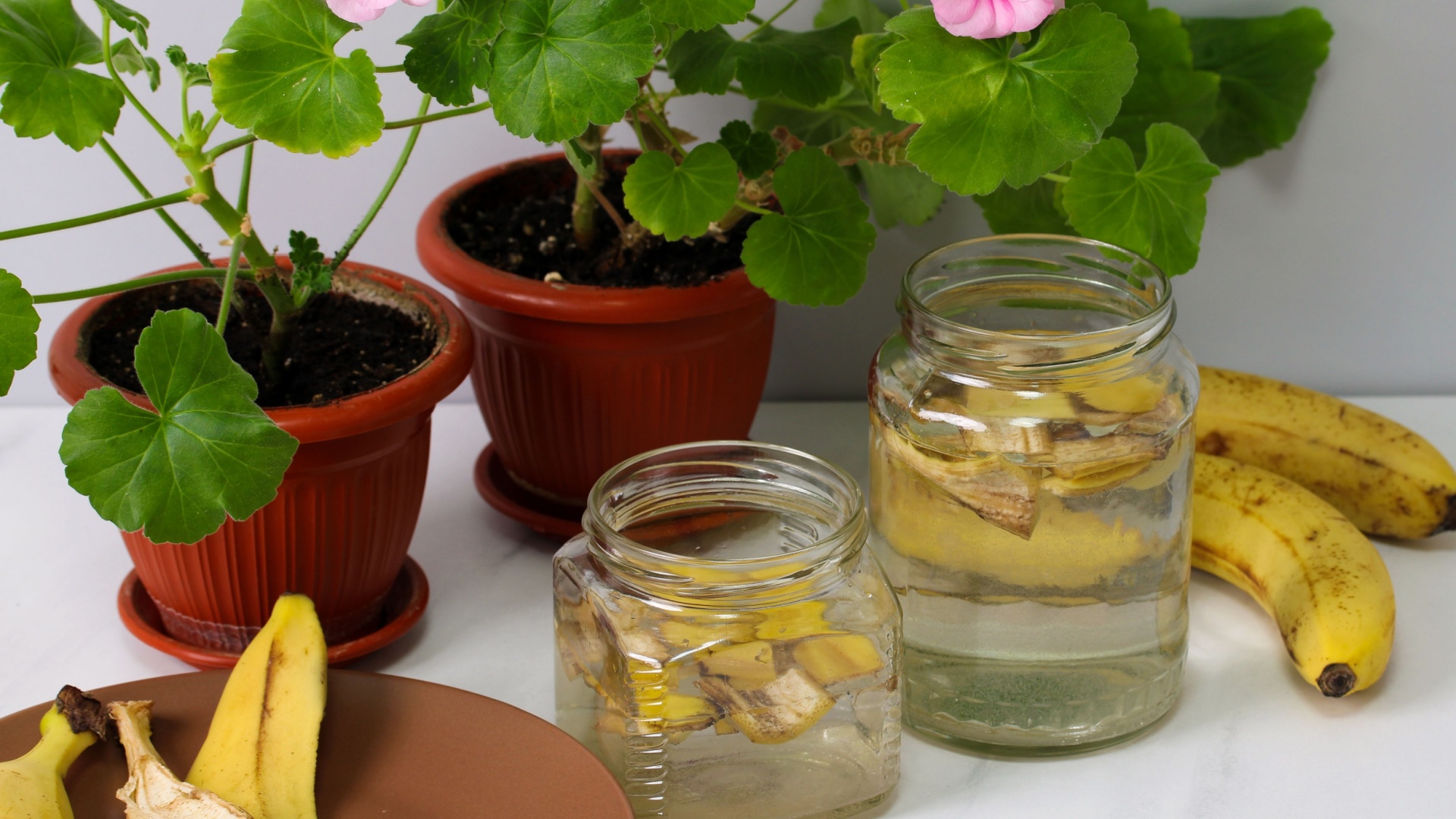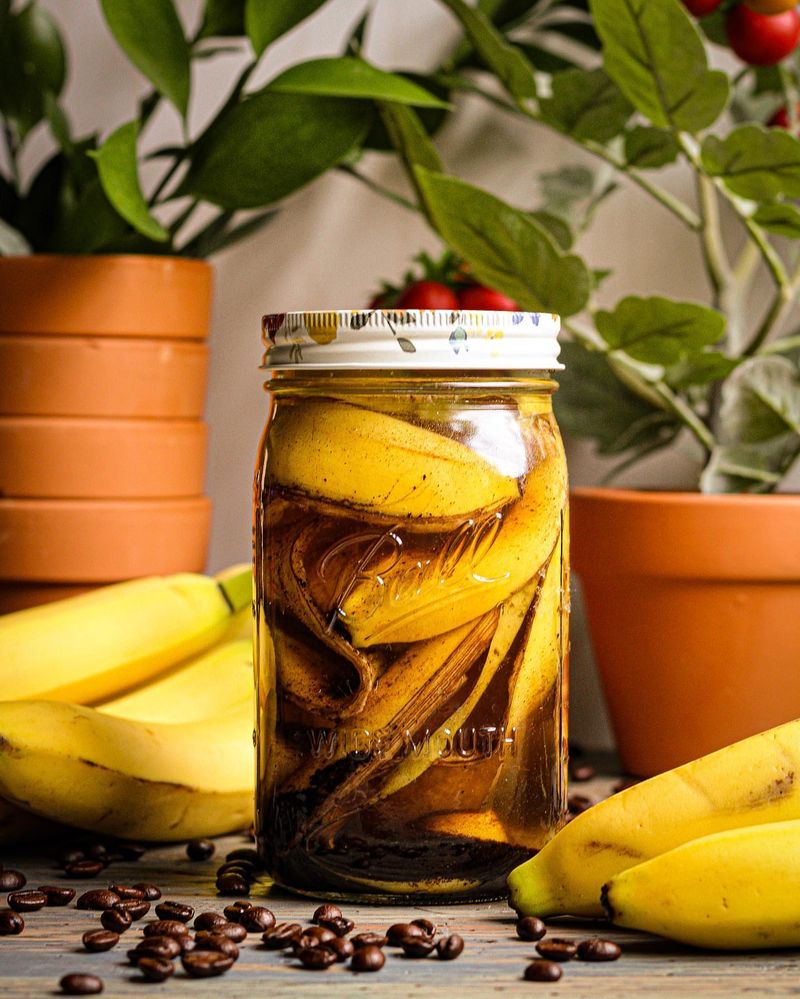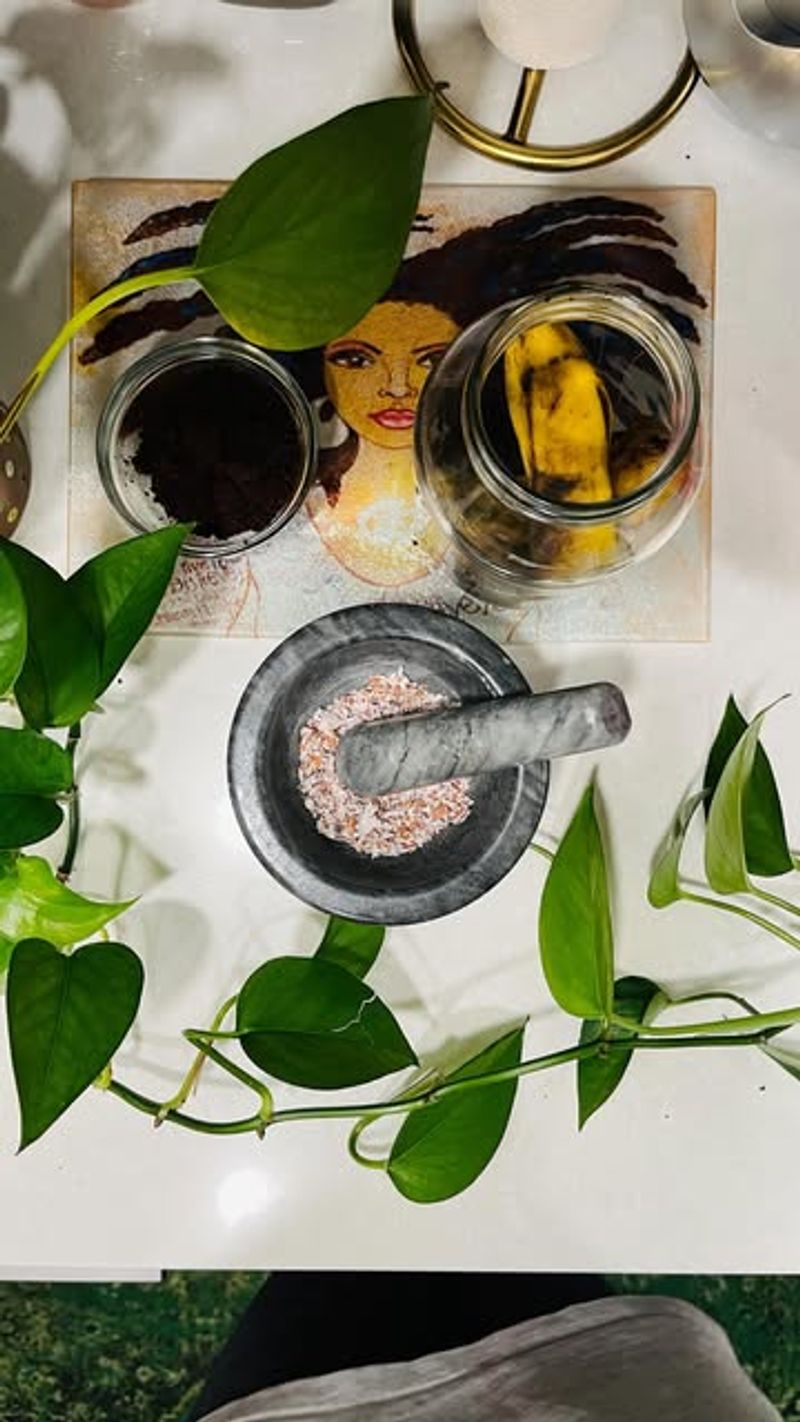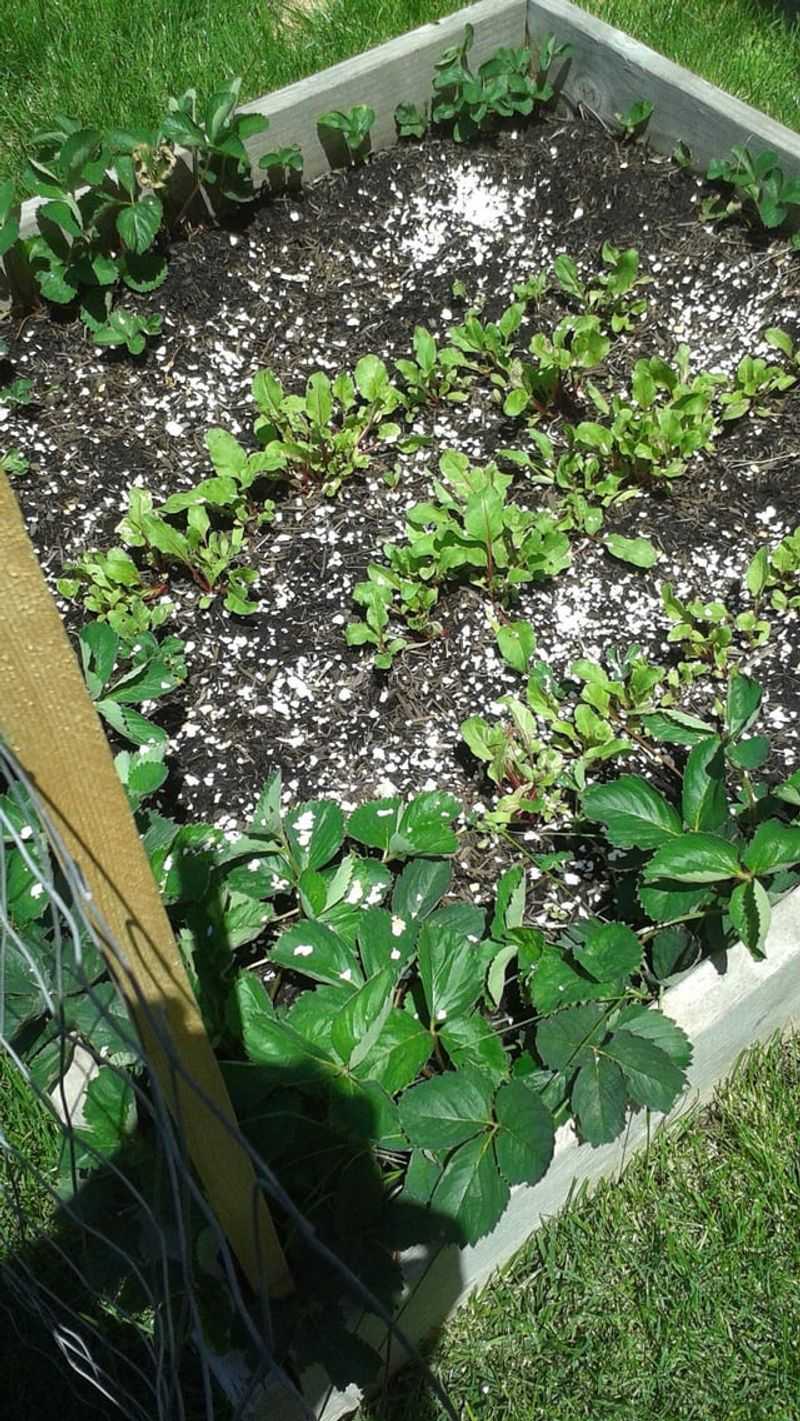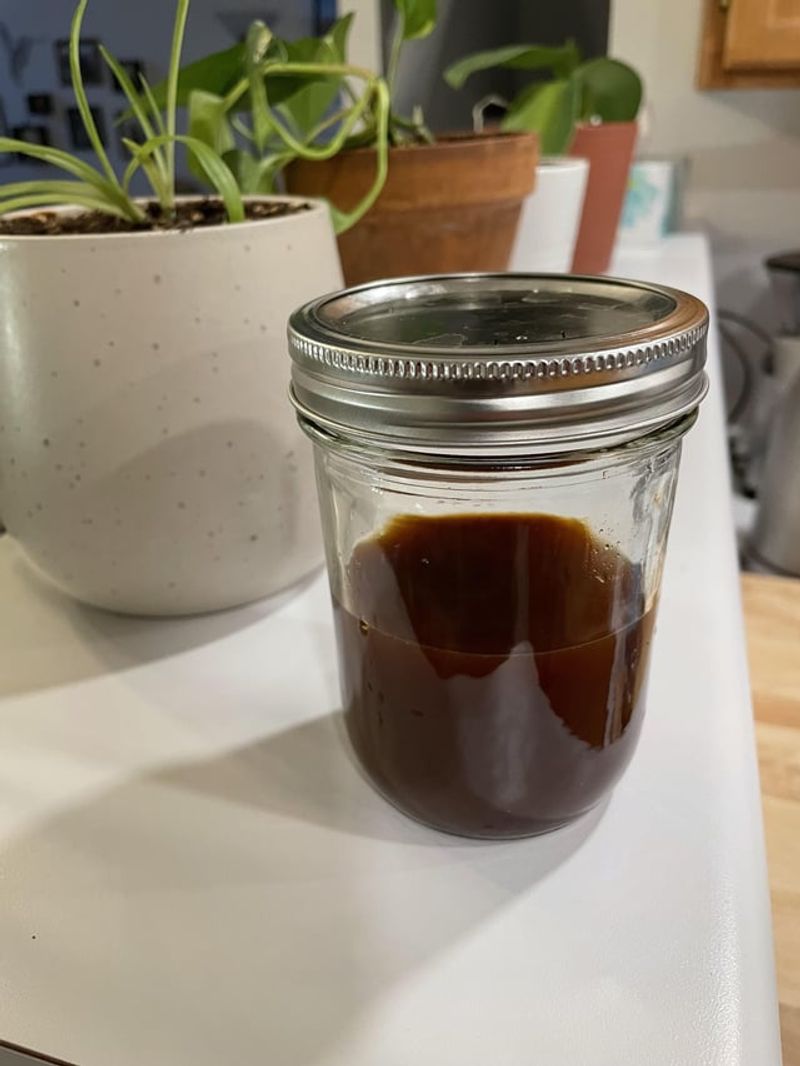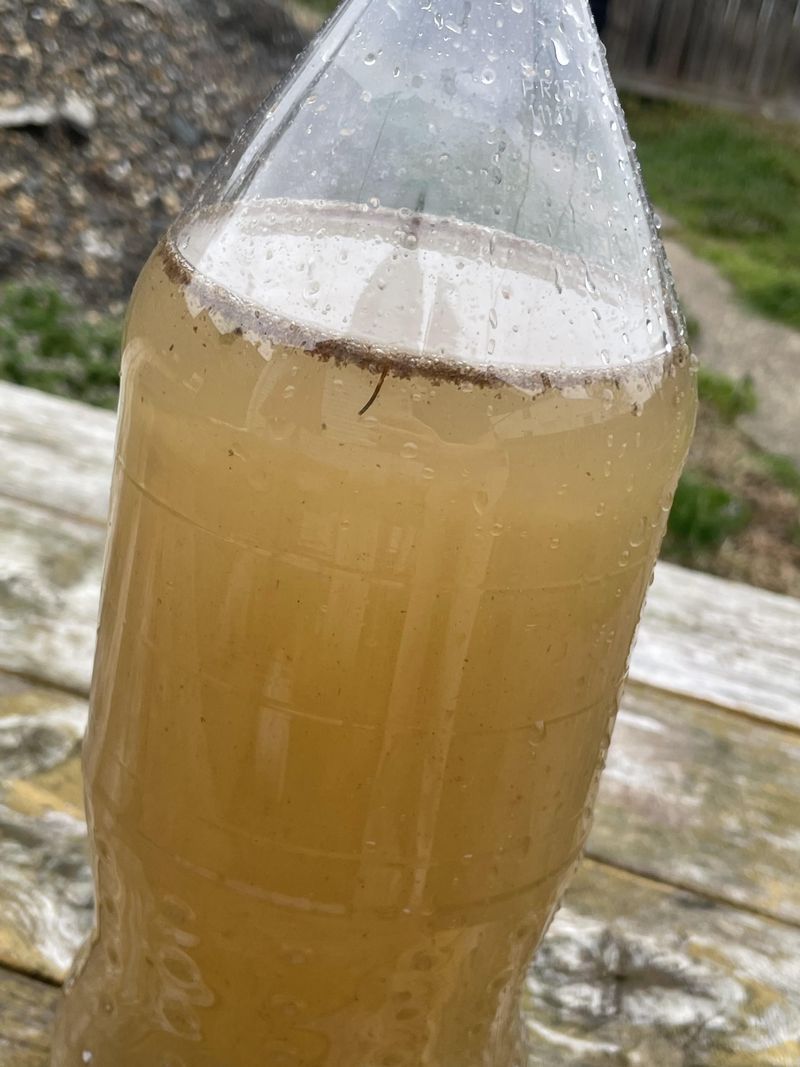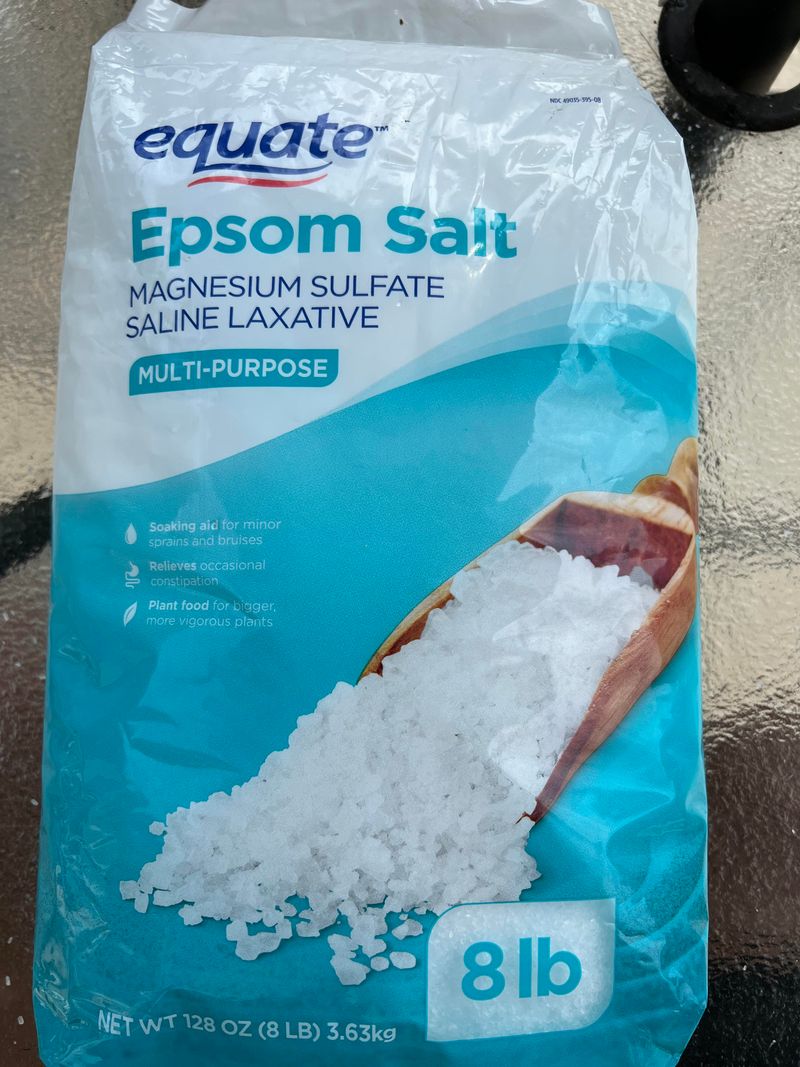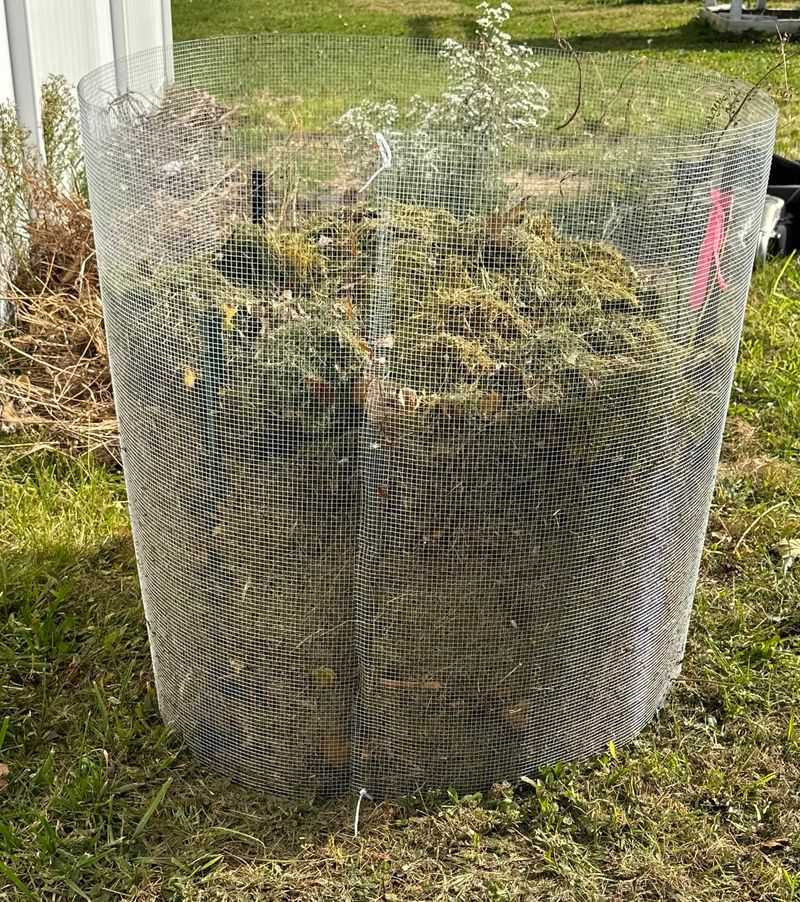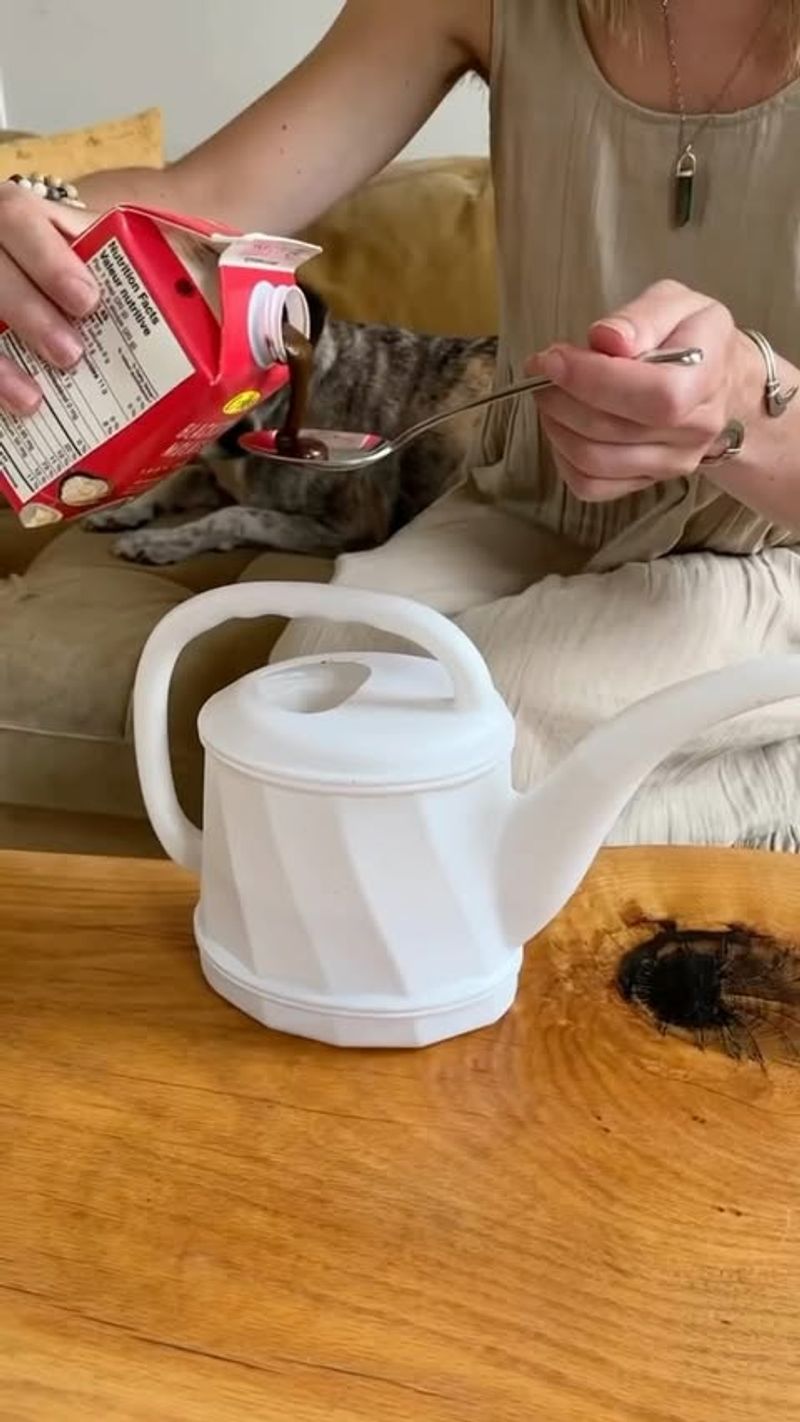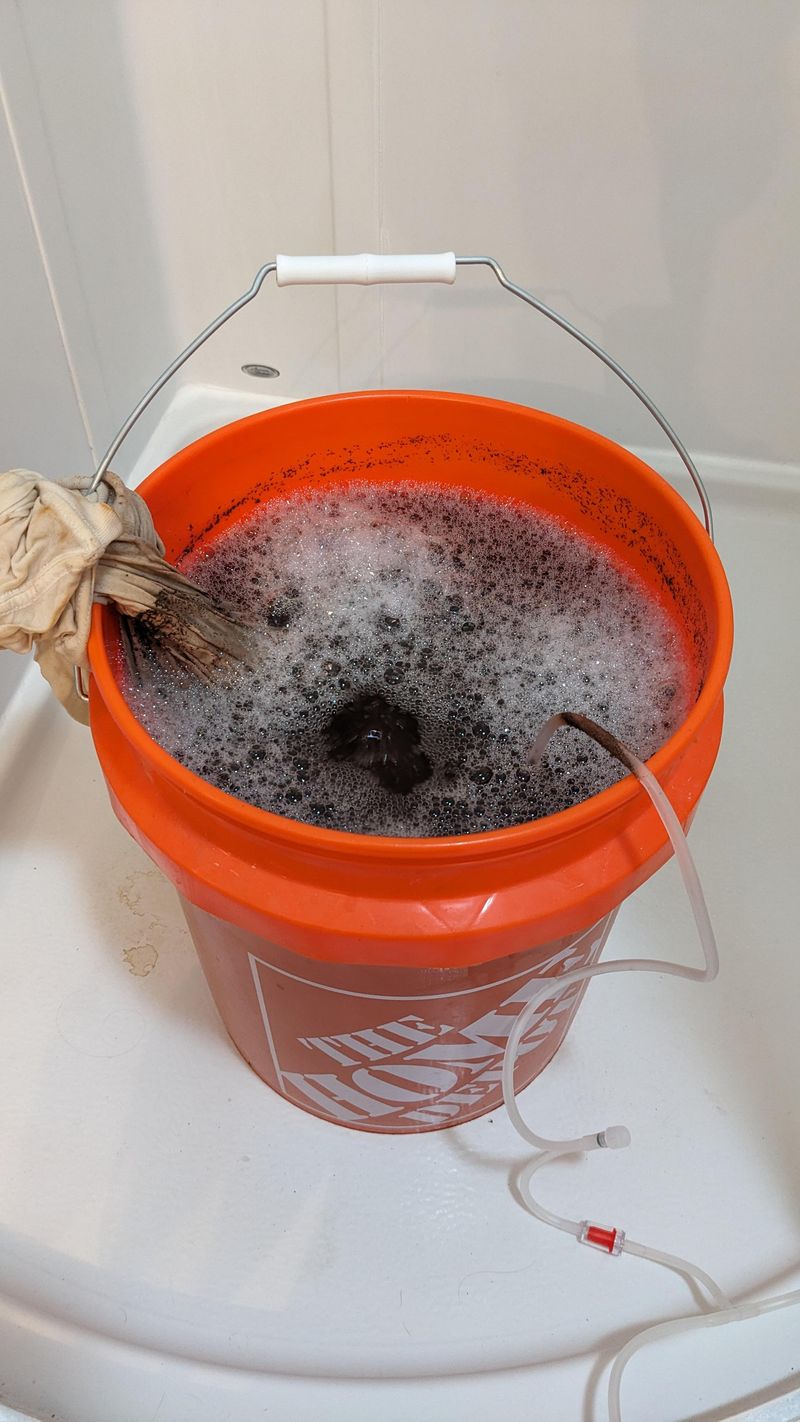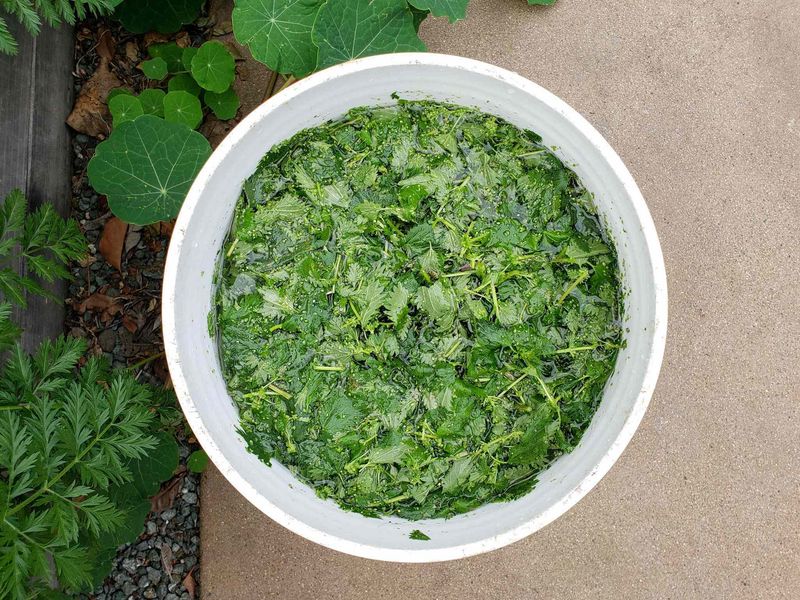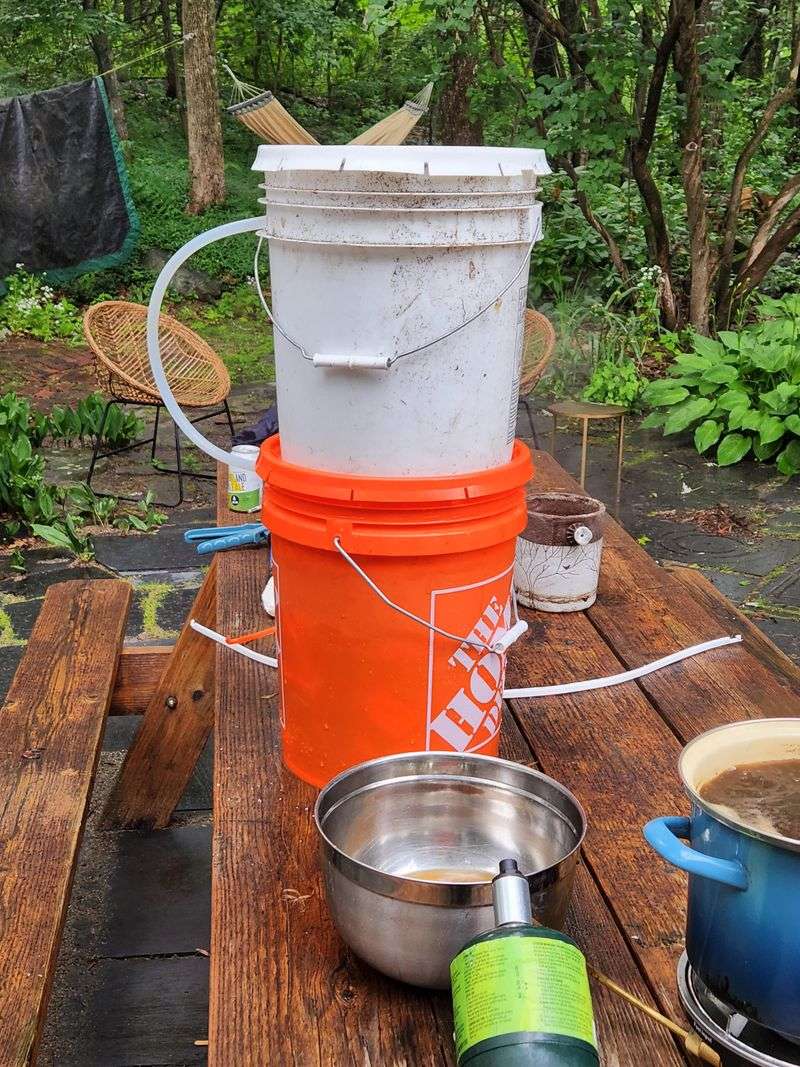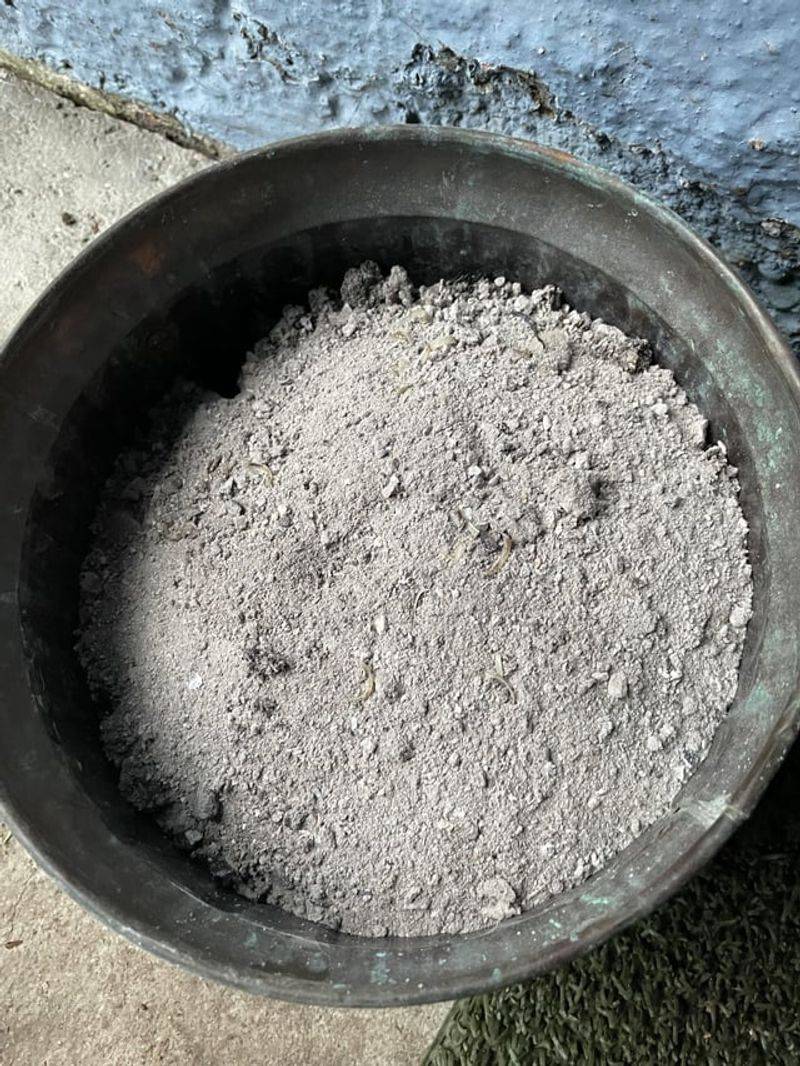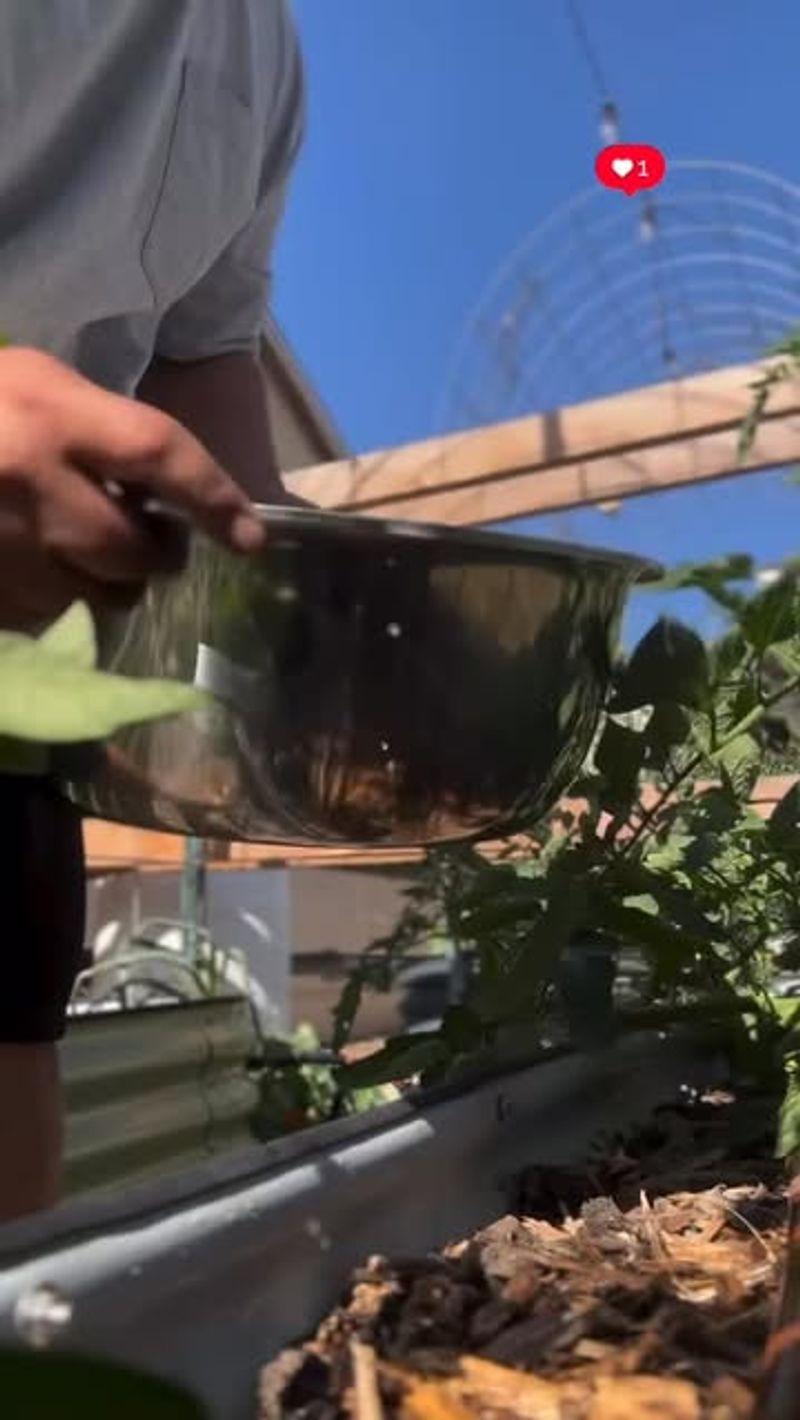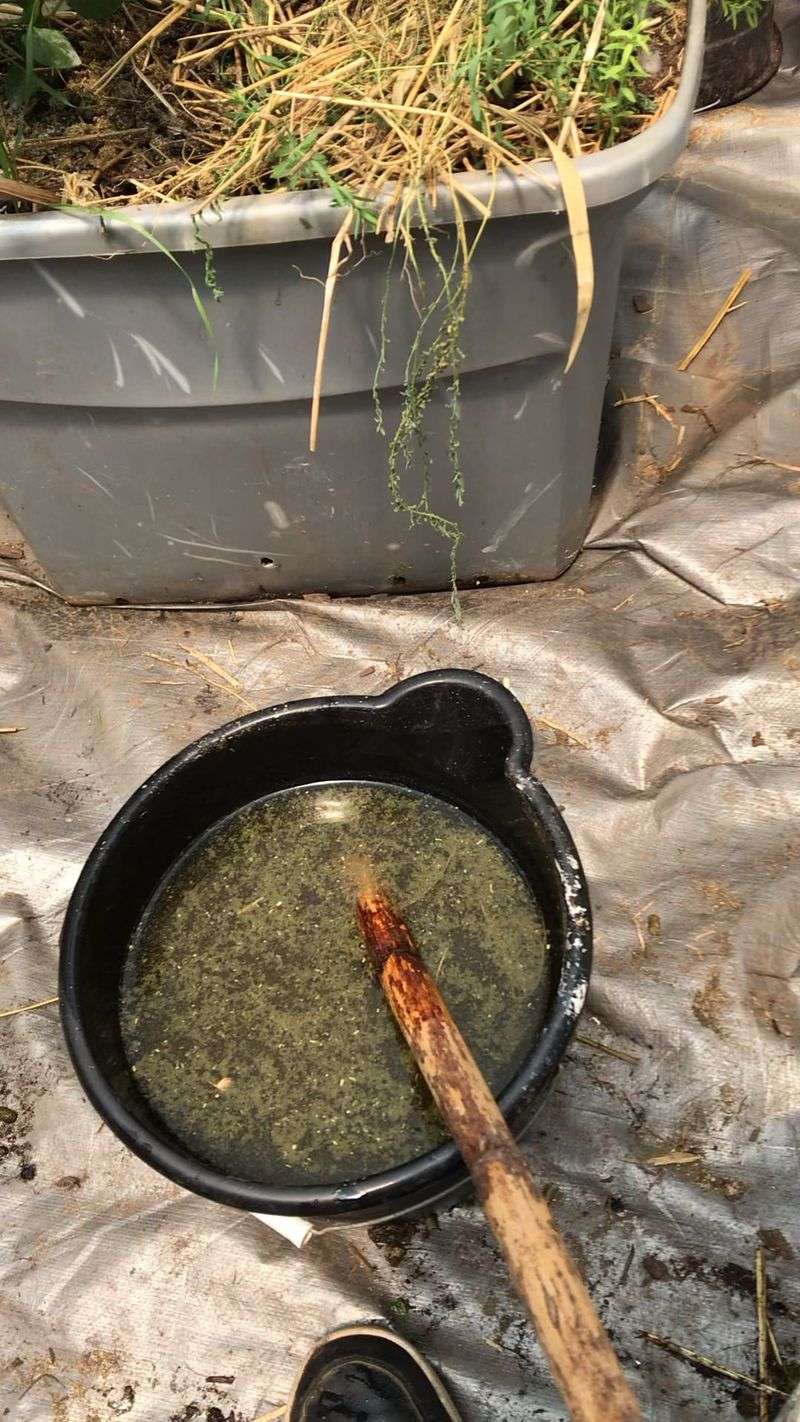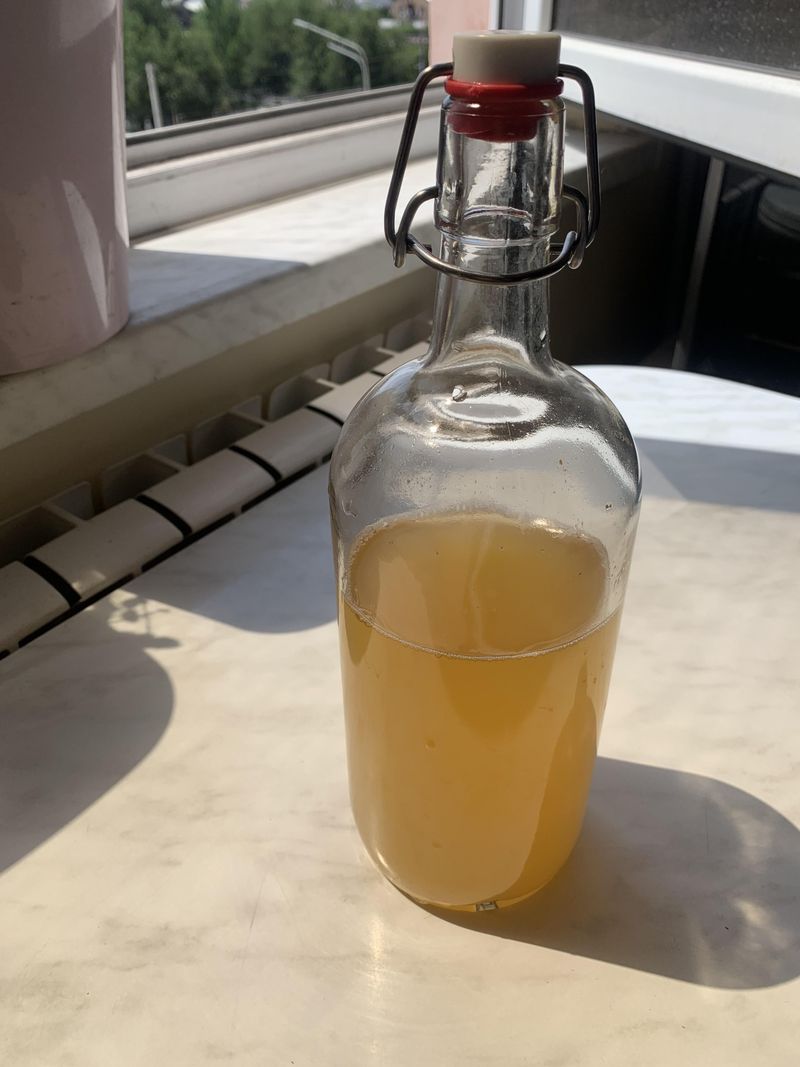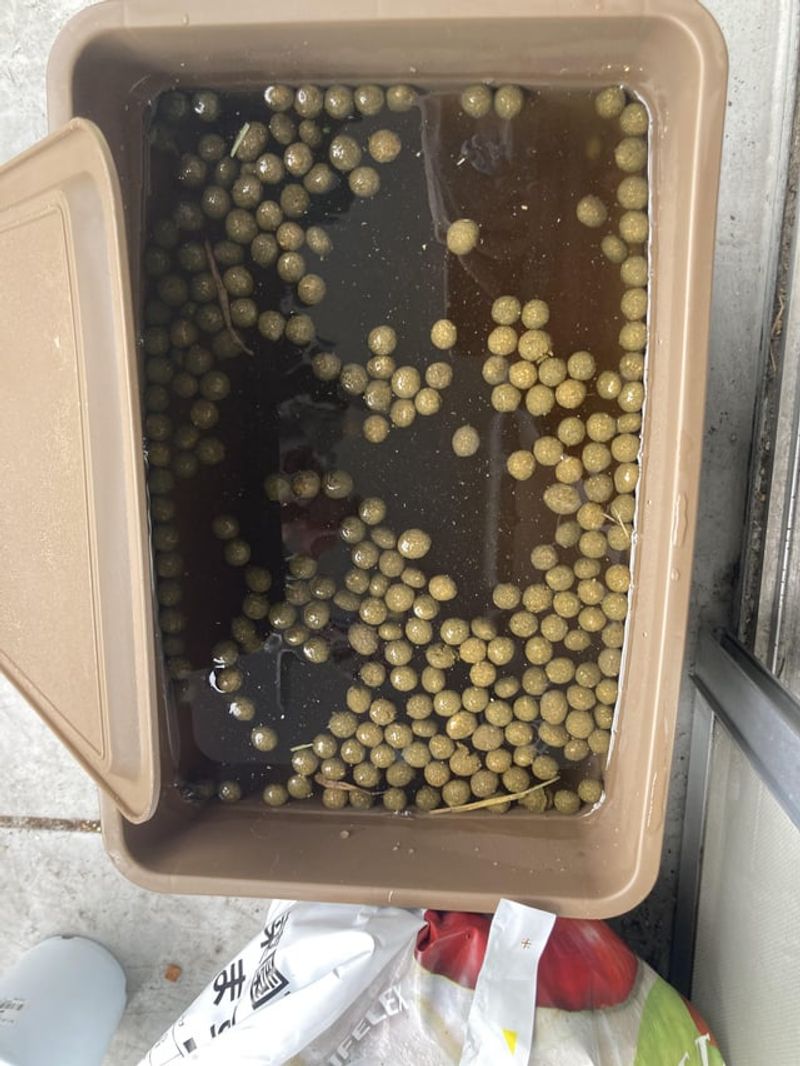Store-bought fertilizer can cost a fortune—and half the time, you’re not even sure what’s in it. But here’s the good news: some of the best plant fuel is already in your kitchen, compost bin, or pantry.
These 17 DIY liquid fertilizers are easy to make, budget-friendly, and packed with the nutrients your garden craves. Get ready to feed your plants—and your soil—the natural way.
1. Banana Peel Tea
Those brown banana peels destined for the trash? They’re packed with potassium and phosphorus that plants crave. Simply soak 3-4 dried peels in water for 48 hours, then strain.
The resulting amber liquid works wonders for flowering plants and fruit development. Your roses and tomatoes will show dramatic improvement after just a few applications.
Fun fact: Banana peels contain 42% potassium, making them one of the richest natural sources available to home gardeners!
2. Coffee Ground Elixir
Morning coffee ritual just got better for your garden too! Used coffee grounds release nitrogen slowly as they break down, creating perfect food for acid-loving plants.
Mix one cup of used grounds with five cups of water, let steep overnight. The dark brew delivers a gentle nitrogen boost without burning delicate roots.
Azaleas, blueberries, and ferns particularly thrive with this treatment, showing deeper green foliage within weeks of application.
3. Eggshell Calcium Boost
Crushed eggshells create a calcium-rich solution that prevents blossom end rot in tomatoes and strengthens plant cell walls. Rinse shells thoroughly, dry them, then crush into small pieces.
Steep a cup of crushed shells in a gallon of water for a week, stirring occasionally. The resulting liquid contains calcium carbonate that slowly releases into soil.
Garden lore says grandmothers used this technique long before commercial fertilizers existed, especially for their prized tomato plants!
4. Compost Tea Wonder
Garden gold in liquid form! Fill a burlap bag with finished compost and suspend it in a bucket of water like a giant tea bag. Let this brew for 3-5 days, stirring daily to aerate.
The resulting dark liquid contains beneficial microbes and nutrients that improve soil health dramatically. Plants respond with vigorous growth after application.
Ancient farming cultures used similar fermented plant preparations thousands of years ago, proving some gardening wisdom truly stands the test of time.
5. Seaweed Solution
Beach trips can benefit your garden! Collect seaweed (rinse to remove salt), then soak in a bucket of water for 2-3 weeks covered with a loose lid.
The fermented liquid contains over 60 trace minerals and growth hormones that commercial fertilizers can’t match. Plants develop stronger resistance to disease and pests after application.
Maritime gardeners have relied on seaweed fertilizer for centuries, especially in coastal Ireland and Scotland where lush gardens thrive despite poor soil conditions.
6. Weed Tea Booster
Transform garden enemies into allies! Young dandelions, chickweed, and comfrey leaves contain valuable nutrients they’ve pulled from deep soil layers. Fill a bucket halfway with these weeds before they seed.
Cover with water and let ferment for two weeks with occasional stirring. The strong-smelling liquid should be diluted 1:10 with water before application.
Medieval monastery gardens relied heavily on herbal teas like this, recognizing the nutritional value of common weeds long before modern science confirmed their benefits.
7. Epsom Salt Magnesium Mix
Yellowing leaves often signal magnesium deficiency, easily fixed with Epsom salt solution. Dissolve one tablespoon in a gallon of water for an instant magnesium boost.
Spray directly on leaves for fastest absorption or water at plant base. Peppers, tomatoes, and roses respond dramatically, often showing greener foliage within days.
Victorian gardeners swore by Epsom salts for their prize roses, applying it regularly to maintain those vibrant blooms that won so many garden competitions!
8. Grass Clipping Nitrogen Punch
Lawn mowing day becomes fertilizer-making day! Fresh grass clippings release nitrogen quickly when soaked in water. Fill a bucket 1/3 full with clippings, then add water to the top.
Cover loosely and steep for 3 days, stirring daily. The resulting green liquid should be diluted 1:10 before applying to nitrogen-hungry plants like corn and leafy greens.
The distinctive grassy smell means it’s working – those microbes are breaking down plant matter into accessible nutrients!
9. Molasses Energy Drink
Garden soil microbes need food too! One tablespoon of blackstrap molasses dissolved in a gallon of water creates an energy drink for beneficial soil bacteria and fungi.
The simple sugars feed microorganisms that break down organic matter into plant-available nutrients. Regular applications build soil health over time, improving structure and fertility.
Organic farmers consider this their secret weapon for boosting compost activity and accelerating the breakdown of organic matter in garden beds.
10. Worm Tea Miracle
Vermicompost enthusiasts rejoice! The liquid that drains from worm bins contains concentrated plant growth factors and beneficial microbes. Collect this dark liquid gold during your normal bin maintenance.
Dilute with water at 1:10 ratio before applying to plants. Seedlings respond particularly well, showing stronger stems and faster growth rates than those treated with conventional fertilizers.
Charles Darwin himself studied worms extensively, concluding that their digestive processes created some of the most fertile soil on Earth!
11. Nettle Nutrient Brew
Stinging nettles make incredible fertilizer! Wearing gloves, fill a bucket halfway with fresh nettle leaves and stems before they flower. Cover completely with water and weigh down with a brick.
Let ferment for 2-3 weeks until bubbling stops. The pungent liquid contains high levels of iron, magnesium, and nitrogen perfect for heavy feeders like corn.
European cottage gardeners have used nettle tea for generations, particularly in biodynamic gardening where it’s considered one of the essential plant-based preparations.
12. Fish Emulsion Superfood
Fish scraps create powerful fertilizer loaded with nitrogen, phosphorus, and micronutrients. In a bucket with tight-fitting lid, combine fish parts with equal parts water, then add 1/4 cup molasses.
Let ferment outdoors for two weeks, stirring occasionally. The resulting liquid should be diluted 1:20 before application due to its strength.
Native American agricultural practices included burying fish beneath corn plantings – this liquid version delivers the same benefits without attracting animals!
13. Wood Ash Potassium Wash
Fireplace cleanup yields garden treasure! Soak 1 cup of hardwood ash in 5 gallons of water for several days, stirring occasionally. The resulting alkaline solution contains potassium and trace minerals.
Perfect for tomatoes, potatoes, and fruit trees that need potassium for proper fruiting. Never use on acid-loving plants like blueberries or azaleas.
Pioneer gardeners relied heavily on wood ash as their primary garden amendment, recycling hearth waste into food production in a perfect closed-loop system.
14. Vegetable Cooking Water
Don’t pour pasta or vegetable cooking water down the drain! This starchy, nutrient-rich liquid contains minerals that leached out during cooking.
Allow it to cool completely before applying directly to garden soil. Potato water is especially beneficial due to its potassium content, while bean and pea water adds nitrogen.
Depression-era gardeners never wasted a drop of cooking water, understanding its value long before sustainability became fashionable. Every kitchen byproduct had a purpose in the garden!
15. Alfalfa Tea Tonic
Alfalfa contains triacontanol, a natural growth stimulant that makes plants thrive. Soak 1 cup of alfalfa meal or pellets (from farm supply stores) in 5 gallons of water for 5-7 days.
Stir daily to aerate the mixture. The resulting greenish-brown liquid promotes rapid cell division and root development when applied biweekly.
Greenhouse growers often keep a continuous batch brewing, claiming it produces the most vibrant flowers and highest vegetable yields of any natural fertilizer they’ve tested.
16. Vinegar Micronutrient Mix
Just one tablespoon of apple cider vinegar in a gallon of water creates a mild acidic solution that helps release micronutrients in alkaline soils. Apply monthly around acid-loving plants.
The acetic acid mimics natural soil processes that make iron and manganese available to plant roots. Blueberries, rhododendrons, and hydrangeas show deeper coloration after treatment.
Vinegar’s been used in gardens since ancient times – Roman texts mention its use for treating specific plant ailments and improving soil conditions!
17. Rabbit Manure Tea
Rabbit owners have garden gold! Unlike other manures, rabbit droppings can be used fresh without burning plants. Soak one cup of pellets in a gallon of water for 24 hours.
The resulting brew contains balanced NPK nutrients plus micronutrients. Most impressive is its immediate availability to plants – no waiting for decomposition.
Victory gardeners during World War II often maintained rabbit hutches specifically for the valuable manure, feeding their families with both meat and vegetable harvests boosted by this powerful fertilizer.

